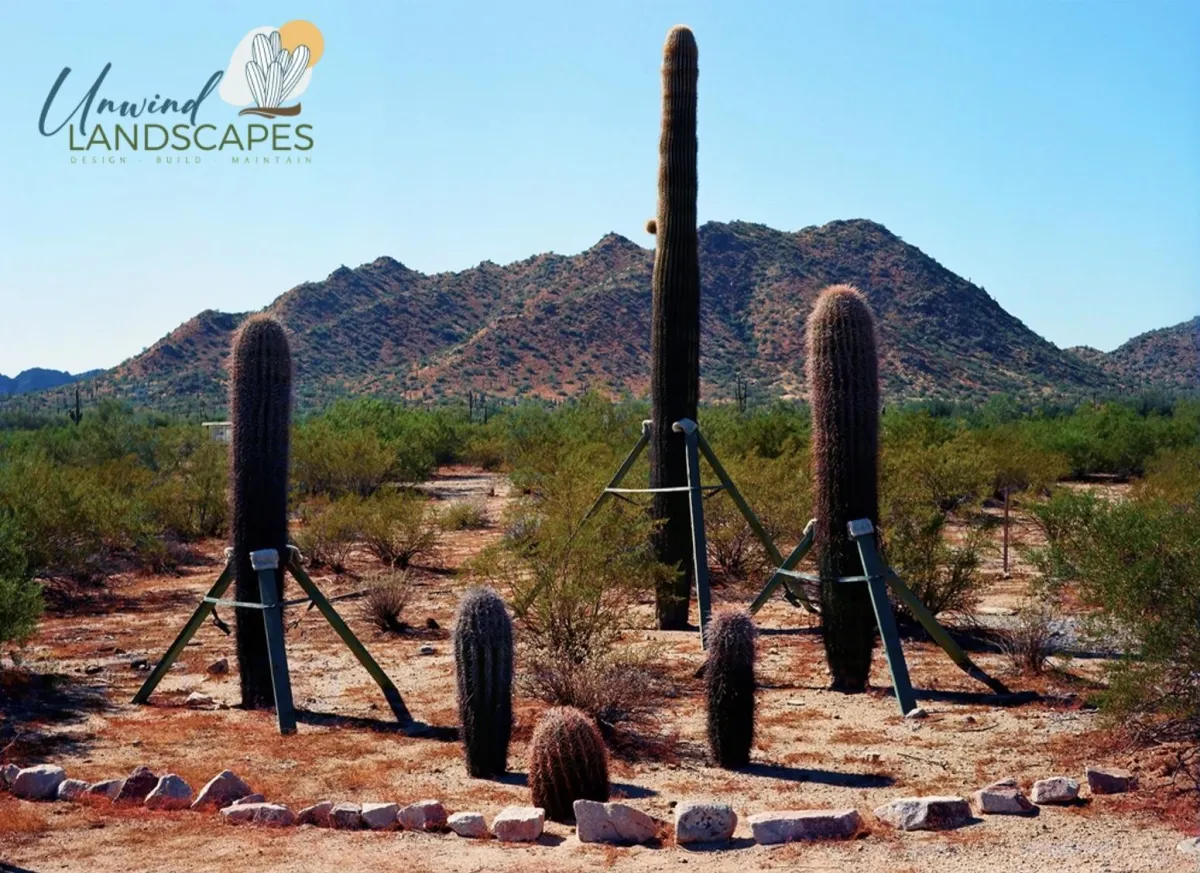
Protecting our State Treasures: How to Safely Transplant a Young Saguaro Cactus in Arizona
The iconic saguaro cactus, with its towering arms and majestic silhouette, is a symbol of the Arizona desert. Transplanting a young saguaro is a delicate but rewarding process that requires careful planning, a respectful understanding of Arizona law, and proper technique to ensure the cactus survives and thrives in its new home.
Whether you’re relocating a saguaro due to construction, enhancing your desert landscape, or preserving a native specimen, following the right steps is essential.
Know the Law Before You Dig
Before attempting to move a saguaro cactus, it's important to understand Arizona’s strict regulations protecting native plants. Saguaros are safeguarded under the Arizona Native Plant Law. This means:
You must obtain a permit from the Arizona Department of Agriculture before transplanting any saguaro from state, public, or private land.
The cactus must be tagged and documented.
If you’re working with a landscaper or nursery, make sure they are licensed and familiar with saguaro handling.
Violating these rules can result in hefty fines. Always do your homework and ensure you're compliant with local and state regulations.
Step 1: Choose the Right Time of Year
Transplanting is best done in the cooler months, typically between late fall and early spring. This reduces heat stress on the plant and allows the saguaro to slowly acclimate to its new environment before summer temperatures rise. Avoid transplanting during monsoon season, as saturated soil can increase the risk of root rot.
Step 2: Prepare the New Site
The success of a saguaro transplant heavily depends on proper site selection:
Choose a spot with full sun exposure.
Ensure the soil is well-draining, ideally sandy or gravelly desert soil.
Avoid low areas where water may pool.
Before transplanting, dig a hole about the same depth as the cactus’s root ball and slightly wider. A stable base and good drainage are crucial for the cactus to re-establish its roots.
Step 3: Digging Up the Saguaro
When excavating a young saguaro (typically under 5–7 feet tall), it’s important to protect both the plant and yourself:
Wrap the cactus in thick blankets, carpet remnants, or foam to protect its delicate skin from bruising and to make it easier to handle.
Use gloves and protective clothing—saguaro spines are sharp and can cause injury.
Carefully dig around the cactus in a circular motion, exposing the root ball and any anchoring roots.
Keep the root system as intact as possible and minimize root disturbance.
Larger saguaros may require equipment and professional assistance, even at this young stage, due to their weight and the fragility of their internal water storage systems.
Step 4: Transporting the Cactus
Transport the saguaro upright if possible and always maintain its original compass orientation. This means marking the side of the cactus that was facing south and ensuring it’s positioned the same way in its new location. This helps reduce sunburn and stress during acclimation.
Support the cactus during transit to avoid tipping or rolling, which can damage the plant internally.
Step 5: Replanting
Once at the new site:
Place the saguaro gently into the prepared hole.
Backfill with the original soil, making sure the cactus stands straight and stable.
Do not water immediately. Wait about two weeks before the first light watering to allow any damaged roots to callous and reduce the risk of rot.
Afterward, water sparingly during the first year—just once a month during the hot season—and avoid watering in cooler months unless extremely dry.
Step 6: Monitor and Maintain
It may take several months for the cactus to fully adjust. Watch for signs of distress, such as leaning, yellowing, or shriveling. Minimal change is expected during the first year as the cactus re-establishes itself.
Avoid fertilizing or overwatering—saguaros thrive on patience and a natural desert rhythm.
Transplanting a young saguaro cactus in Arizona is not just about landscaping—it’s about stewardship of a native treasure. By understanding the legal requirements, choosing the right time and site, and handling the cactus with care, you give it the best chance at a long and healthy life in its new home.
With respect and preparation, this slow-growing sentinel of the desert will continue to stand tall for generations to come.
Ready to start your landscape transformation? At Unwind Landscapes, we're here to help every step of the way. From initial design to final planting, we'll work with you to create the yard of your dreams. Let's make your outdoor space amazing together!

